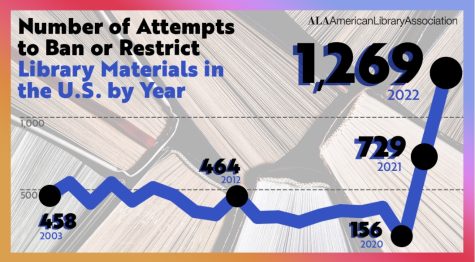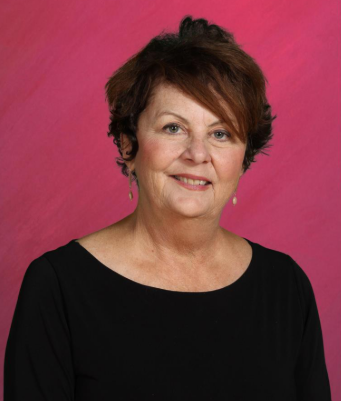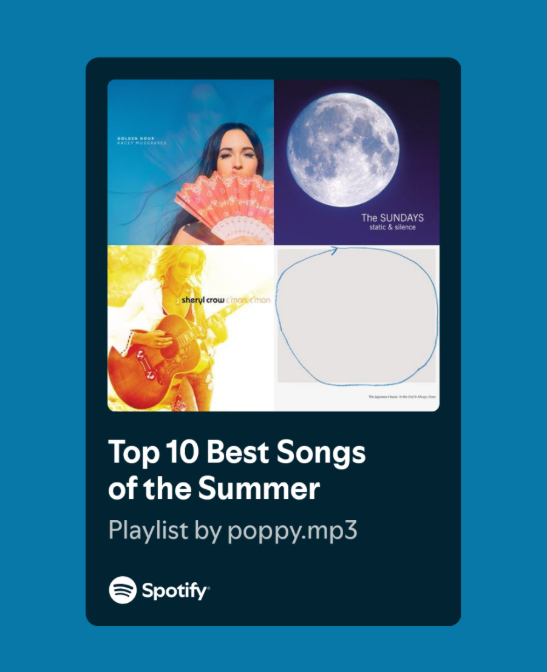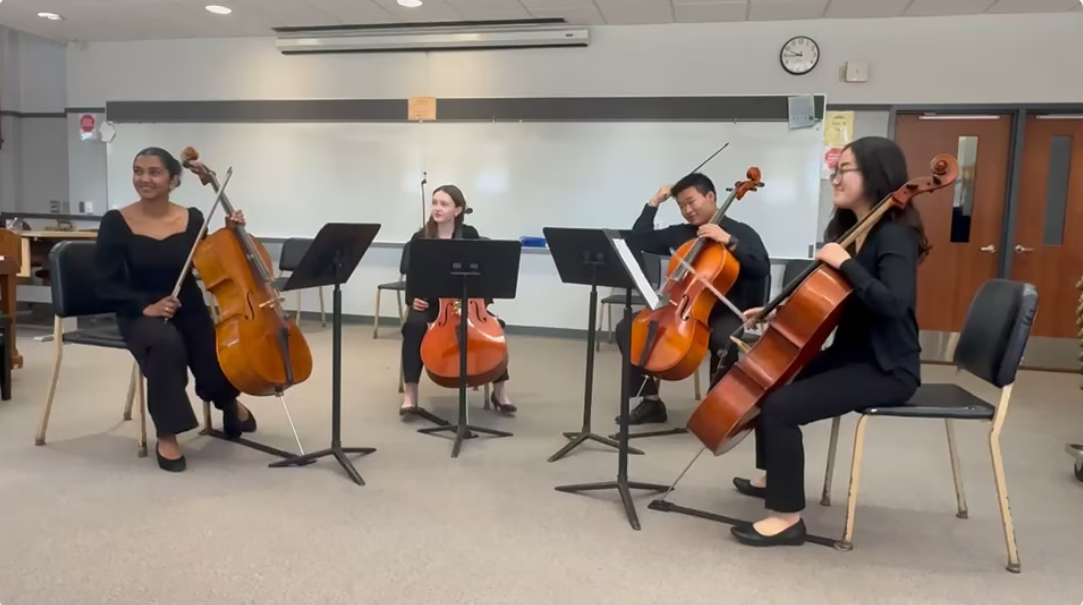Tensions Rise Over the Recent Surge in Banned Books
Books line the shelves in the North LMC of Middleton High School. Book banning is on the rise in the United States.
May 29, 2023
Some of the most commonly used items in the world are pieces of paper strung together to create an array of words, captivating the reader with their mesmerizing stories. We call these simple objects books. But not all books have historically been accepted by society. Even today, there are still books that are banned in areas of the country. These are not accessible to certain age groups, or at all, and have been removed from public schools, public libraries and other important locations.
The first officially documented book ban dates back to the Huang Dynasty in China around 213 BCE, where the Emperor, Qin Shi Huang, burned books that he feared could criticize his reign. In the millennia since then, even more books that have challenged social standards have been “banned”. The first book ban in the United States took place in 1637 in Quincy, Massachusetts, where Thomas Morton’s “New English Canaan” was banned for criticizing the Puritan customs and power structures.
Commonly Banned Topics
Book bans have soared in recent years, kindling criticism across our country. There are common themes in the books that have been banned, mainly concerning topics that have sparked controversy in our society. One of the librarians in Middleton High School’s North LMC, Marisa Fiorito, clarified that the most commonly banned topics were books by and about people of color or the LGBTQ+ community, and that some books were more frequently challenged than others.
“Students should be able to be exposed to delicate topics and information that they don’t necessarily believe in because people need to be exposed to the real world,” an MHS sophomore who wished to remain anonymous said.
In fact, in 2021, children’s and YA books regarding race, gender or sexual identity were the most targeted topics, and that year, there were unforeseen rates of censorship in public libraries. The amount of book bans on these topics grew exponentially from 2020 to 2022 as well.
Laws and Regulations across the United States
The number and frequency of book banning varies between individual states. Texas holds the largest number of books banned, at 713 books, followed by Pennsylvania, with 456 bans, and Florida, with 204 bans.
The federal government has issued laws that prevent the banning of books, using the First Amendment to rule that withdrawing books is unconstitutional and that students have a right to read these books. In the 1982 case Board of Education v. Pico, a majority justice ruled that banning books on the grounds of political beliefs would be an “official suppression of ideas.”
Statistics
Book banning has seen similar patterns in both the topics of the books and the themes that they address. This is seen particularly with books of race, gender, sex or LGBTQ identities. In a study conducted by PEN America, it was found that 22 percent of banned books dealt with topics centering around race or racism, 33 percent center around the LGBTQ community, and 16 percent of the banned books were biographies or historical books that center around people like Nelson Mandela, Neil deGrasse Tyson, Malala Yousafzai, Rosa Parks, Martin Luther King Jr. and Sonia Sotomayor.
According to the American Library Association’s Office for Intellectual Freedom (OIF), 1,269 demands to ban books and resources in public libraries were documented in 2022. About 2,571 books were challenged for bans, a 38 percent increase from the 1,858 bans in 2021. Of these book challenges, about 58 percent were books or materials that were present in schools and 41 percent were books or materials in public libraries.
From the American Library Association’s page on the 2022 Book Ban Data. https://www.ala.org/copyright)

Opinions In Our Student and Teacher Populations
Many of the students and teachers within MHS feel strongly about banning books.
“I think that banning books is wrong,” said freshman Addie Sloan. “When you ban books, it takes away someone’s ability to learn and gain knowledge, and it also prevents someone from understanding what life is like for others.”
Sophomore Melody Lin agreed with this, remarking, “All information should be available. We shouldn’t hide things that we don’t want people to see because that would be censorship.”
Not everyone agrees with this point of view, however, as one teacher said that “it depends [on the type of book].” Some books may be, simply put, too violent or inappropriate for schools to admit them into their curriculum or libraries.
There are many differing opinions on book bans, but there may be solutions to the opposition and protest against book banning. People think that there could be a middle ground in the bans or restrictions made on books.
“I feel like there could easily be successful restrictions put in place,” said freshman Lily Hanson. “For example, at Kromrey Middle School, [some] books could only be available to seventh and eighth graders rather than fifth and sixth graders for maturity reasons, or [there could be] parent consent forms where you have to [obtain] parent consent to read a certain book. People use restrictions as an excuse to ban books entirely, and [these reasons are often] racist and homophobic.”
What Is the Protocol for Book Banning at MHS?
No books have been banned at MHS, but if someone did bring a complaint about a book to the school, there is a long process that they would have to go through with people getting involved on a state level. Ms.Fiorito, a librarian at MHS, said that, “we are just trying to educate administrators and teachers to make sure that they know… if this were to occur [at MHS], we have a policy in place…if someone were to make a formal complaint about a book.”
Book bans are expected to remain at a similar level or higher throughout 2023 across the United States. Based on the number of book bans from 2022 – nearly double than what they were the previous year – we can expect that this is a problem that will continue to rise in the coming years…unless we take action to prevent it.
What Can We Do to Prevent Book Banning?
The prospect of book banning can be daunting, but there are steps that individuals can take to help prevent this issue and inform others that it is a present issue in our society. There are multiple organizations that fight book bans, including the Freedom to Read Foundation, the National Coalition against Censorship and the American Civil Liberties Union (ACLU). Donations could help them move forward in the fight against book bans and create equal liberties in terms of literature for all ages.
Banned books week, taking place from October 1 to 7 this year, is also crucial to spreading awareness about the issue. It is a campaign to spread recognition of banned books and is promoted by the American Library Association and Amnesty International organizations. This can be promoted on social media, through events both inside and outside of school, and even through conversations with friends and classmates. Promoting books that may have been banned because of racist or similar reasons is also important to preventing book banning, as it helps gain awareness and spread the word that banned books are an important issue that needs to be addressed.
Wisconsin currently has no banned books, but there are places within our country that do not hesitate to ban books. Supporting the cause to make these books accessible can ensure that these books can aid in the learning of children, students and adults in the United States and across the world.














